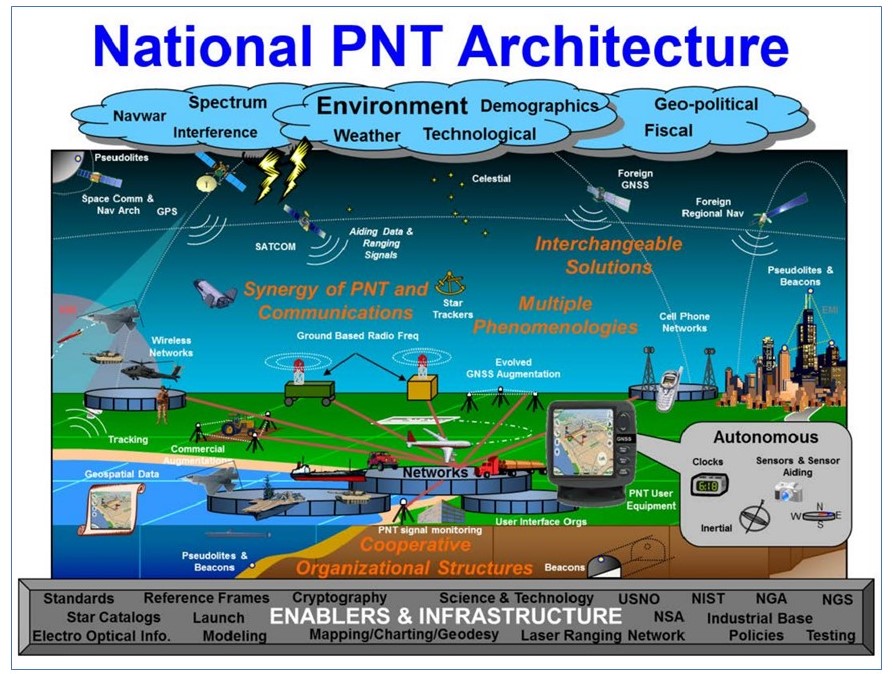Image: U.S. DOT
Blog Editor’s Note: This is a long piece so we won’t add much to it with a long commentary. Only to say that since our inception we have endorsed the architecture/ system of systems approach as envisioned in the US govt’s still-in-use 2008 National PNT Architecture.
Full disclosure, Spirent, Orolia, and UrsaNav are RNT Foundation corporate supporters.

PNT powers unmanned vehicles for transportation, ag and more
What is complementary / alternative positioning, navigation, and timing (PNT)? In this month’s cover story, five of our marketing partners share their perspective on this question and explain how their products address it.
The four global navigation satellite systems (GNSS), two regional navigation satellite systems and public and private augmentation services continue to provide exceptional levels of accuracy and reliability for positioning, navigation and timing (PNT). Yet their well-known vulnerabilities also continue to fuel the need for alternative/complementary sources of PNT data, especially for new and rapidly expanding user segments such as autonomous vehicles.
What constitutes a complementary service to GNSS for PNT and what constitutes a true alternative is partly a matter of definition and opinion. In a January report, the U.S. Department of Transportation stated
…suitable and mature technologies are available to owners and operators of critical infrastructure to access complementary PNT services as a backup to GPS. To achieve the parallel objective of resilience, as described in Executive Order (EO) 13905, that path should involve a plurality of diverse PNT technologies. Promoting critical infrastructure owner/operator use of those technologies that show strong performance, operational diversity, operational readiness, and cost-effectiveness is worthwhile. Based on this demonstration, those technologies are LF and UHF terrestrial and L-band satellite broadcasts for PNT functions with supporting fiber optic time services to transmitters/control segments. (Andrew Hansen et al., Complementary PNT and GPS Backup Technologies Demonstration Report, prepared for the Office of the Assistant Secretary for Research and Technology, Department of Transportation, January 2021, p. 195.
For this year’s Q&A on complementary / alternative PNT, I asked five companies in the GNSS/PNT space to tell us how they define the issue, what solutions they prioritize, what markets they target, and which of their products specifically address the need to make PNT more resilient.
The participants are:
- Roger Hart, Director of Engineering, Spirent Federal Systems
- David Sohn, Solution Architect, Orolia
- Matthieu Noko, Product Manager, SBG Systems
- Jacob Amacker, Product Engineer, OxTS
- Charles Schue, Founder & CEO, UrsaNav
How do you define alternative PNT?


